At the start of 2019, it was clear that companies could no longer afford to ignore the impact of mobile. This year, our data is even more powerful, suggesting that mobile must be a core focus of businesses — no matter their vertical — in order to survive in 2020 and beyond. That’s because this sustained growth of mobile marches on, across markets and around the globe.
Mobile Engagement Deepened in 2019
We saw across the markets analyzed in our State of Mobile 2020 report that consumers spent 35% more time on mobile in 2019 than they did in 2017. The established markets of China (+60%), France (+25%), Japan (+15%), and the United States (+10%) all steadily increased the amount of hours spent per device on mobile. Emerging markets saw similar growth across Indonesia (+20%), India (+25%), and Brazil (+15%).
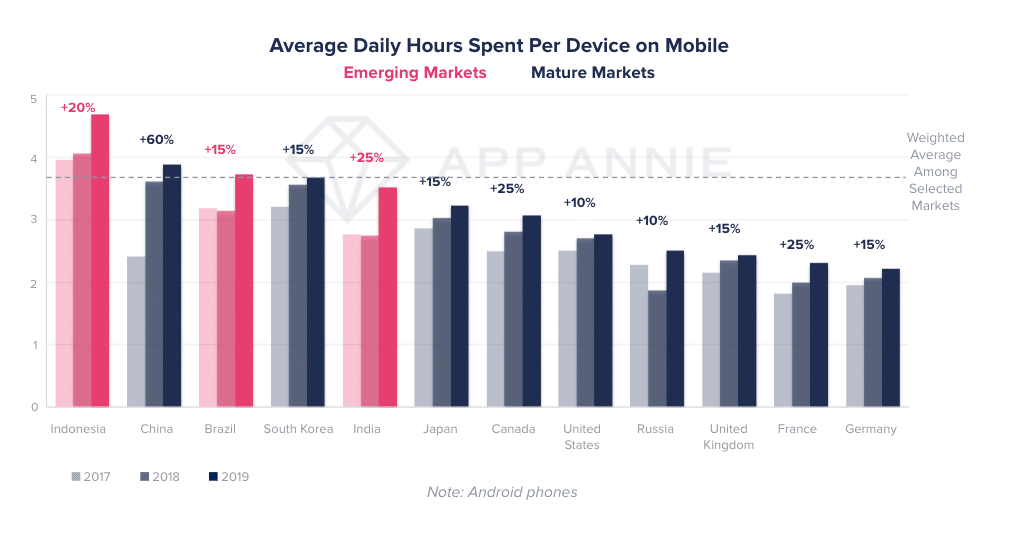
Overall, this added up to mobile users spending an average of 3 hours and 40 minutes per day on their smartphones. That’s 35% higher than in 2017. Put another way, if a consumer sleeps for 8 hours a night, nearly 25% of their time awake is spent on mobile.
Mobile Drove the Top Line in 2019
That increased time spent on mobile also correlated with higher consumer spend on smartphones. Consumer spend in app stores hit $120 billion in 2019, a 2.1x increase over 2016. That’s also contributed to a rise in mobile advertising — a $190 billion market in 2019 — as marketers try to tap into the unparalleled reach and engagement of mobile.
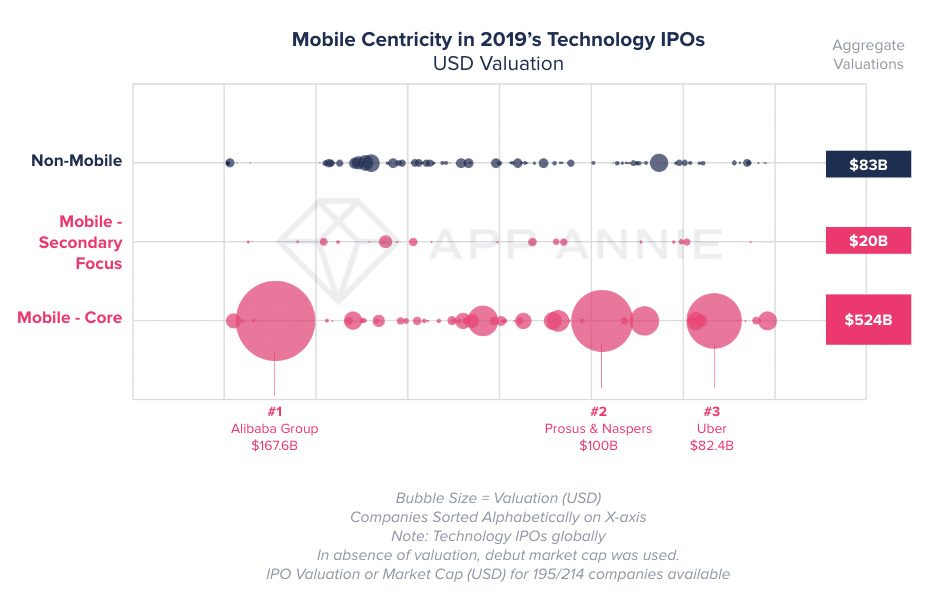
All of these factors have made mobile an immensely powerful channel for businesses. And it’s clearly impacting the bottom lines of mobile-first companies. The 3 largest IPOs in 2019 were companies with mobile as a core focus of their business — Alibaba Group, Prosus & Naspers, and Uber. In fact, mobile-focused companies had a 6.5x higher valuation than companies without a mobile focus.
Mobile Consumer Spent Hit Highest Annual Level at $120B
In 2019, global consumer spend through the app stores (iOS, Google Play and third-party Android stores in China) more than doubled in size since 2016. China remained the largest market, making up 40% of global spend. While gaming represented 72% of total spend, subscriptions in non-gaming apps has fueled growth in mature markets like the US, Japan, South Korea, and the UK. By 2023, the mobile industry is set to contribute $4.8 Trillion to global GDP.
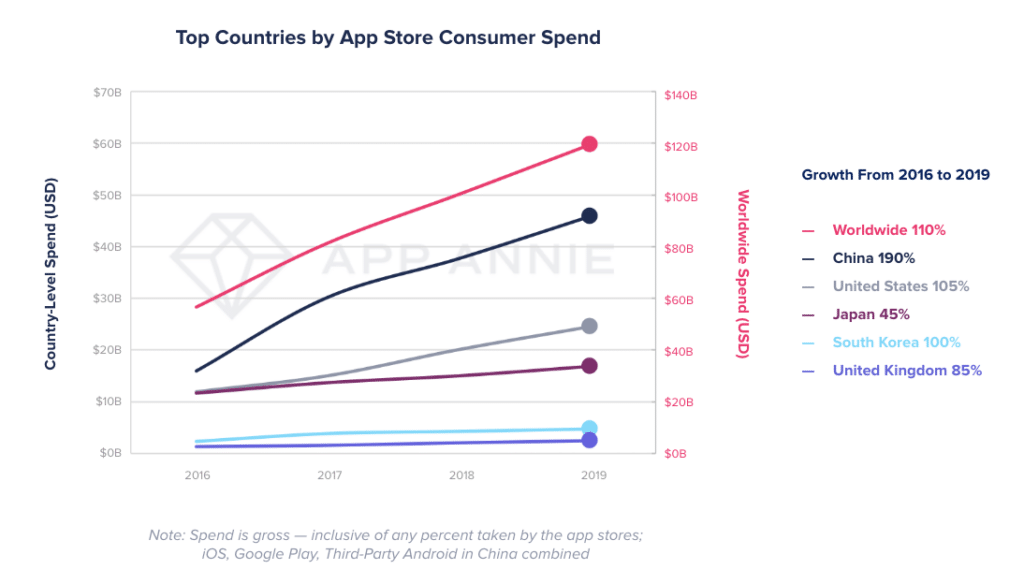
Understanding Gen Z: the Mobile-First Generation
Last year, Generation Z — or those who were born between 1997 and 2012 — overtook millennials as the largest generation on earth, now accounting for 32% of the global population — the largest generation in history.
That creates an unprecedented challenge and opportunity for businesses around the world. After all, this is a group of people who grew up as digital natives, fluent in the language of smartphones and mobile apps. They socialize, connect, and consume media in vastly different ways than previous generations.
In fact, our State of Mobile 2020 report found that Gen Z had a 60% higher engagement in mobile apps per user than older demographics last year. They also spent more time per app, 3.8 hours on average, every month among the top 25 non-gaming apps.
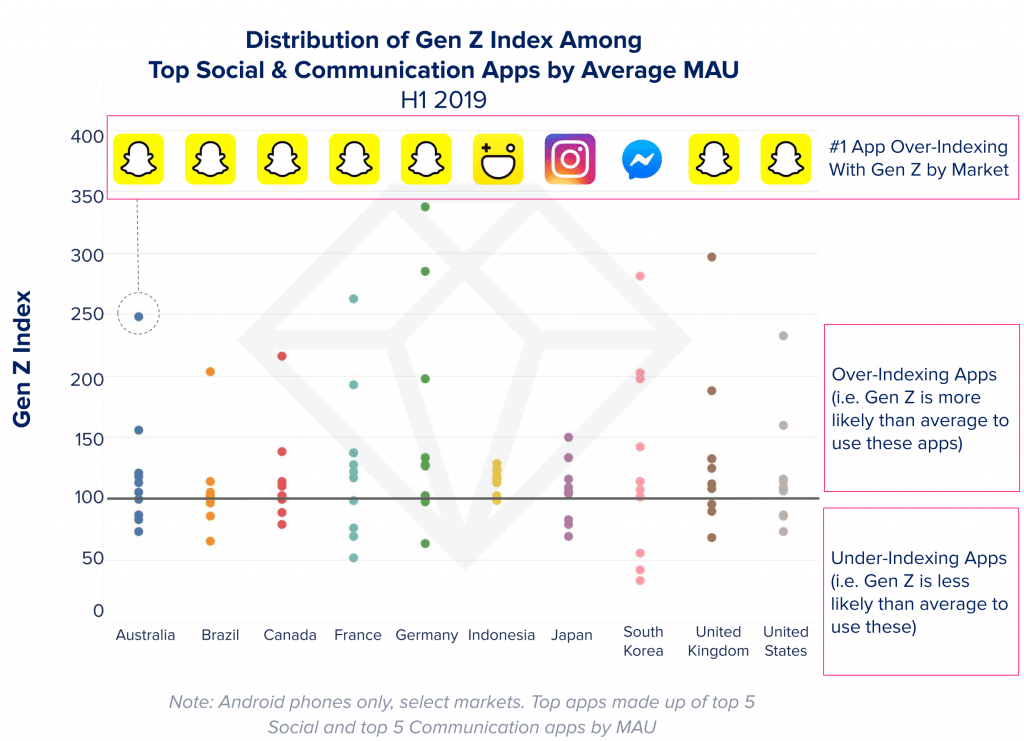
This generation already influences more than $600 billion in consumer spend. Companies that want a slice of this growing pie must understand Gen Z’s mobile behavior, preferences, and brand expectations.
Mobile Gaming is the World’s Most Popular Form of Gaming
Mobile games in 2019 saw 25% more spend than in all other gaming combined — inclusive of PC/Mac, console, and handheld console gaming. Mobile gaming extended its global lead in consumer spend to 2.4x PC/Mac gaming and 2.9x home game consoles in 2019. Mobile has democratized gaming, allowing for a portable gaming console to be in the pocket of nearly every consumer. In 2020, mobile gaming is on track to surpass $100B across all mobile app stores in 2020, which was about the size of the app stores overall in 2018.
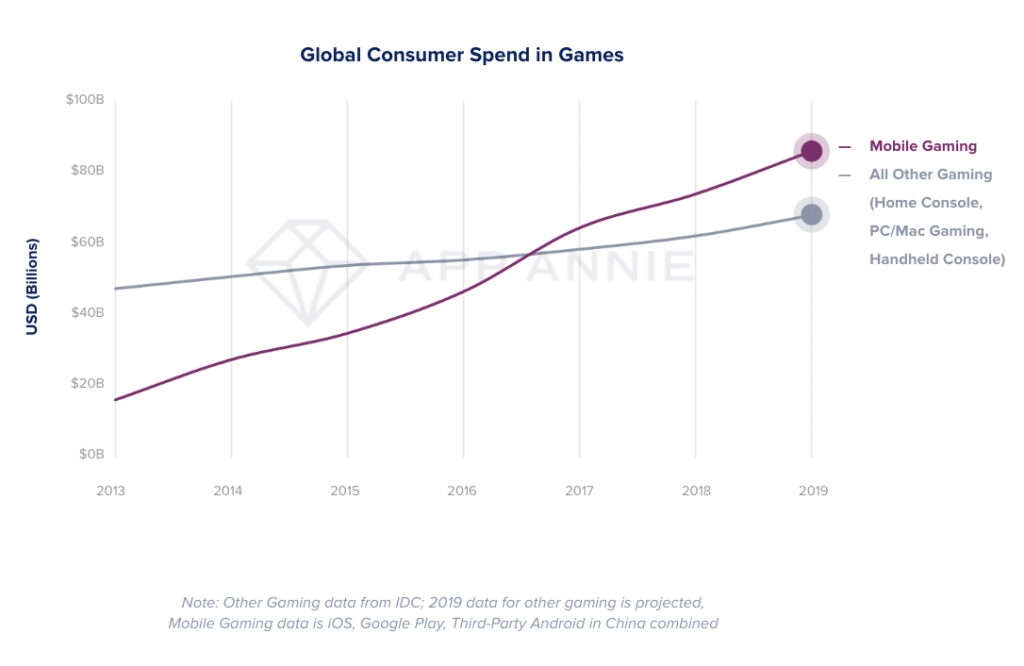
Even Amidst Economic Headwinds, Mobile Finance Grew in 2019
In 2019, US and China trade tensions created economic turbulence in international trade. But in the mobile consumer world, finance has never been more seamless. Our State of Mobile 2020 report found that across essentially all markets, consumers are migrating more of their financial activities to mobile. Consumers accessed finance apps more than 1 trillion times in 2019 across Android phones, which is a 100% increase over just two years ago. User bases for mobile finance — across both banking and fintech — grew dramatically in 2019. Around the world, the average monthly active user base of the top 10 fintech apps grew 20% year over year in 2019; while the MAU of the top 10 banking apps grew 15%.
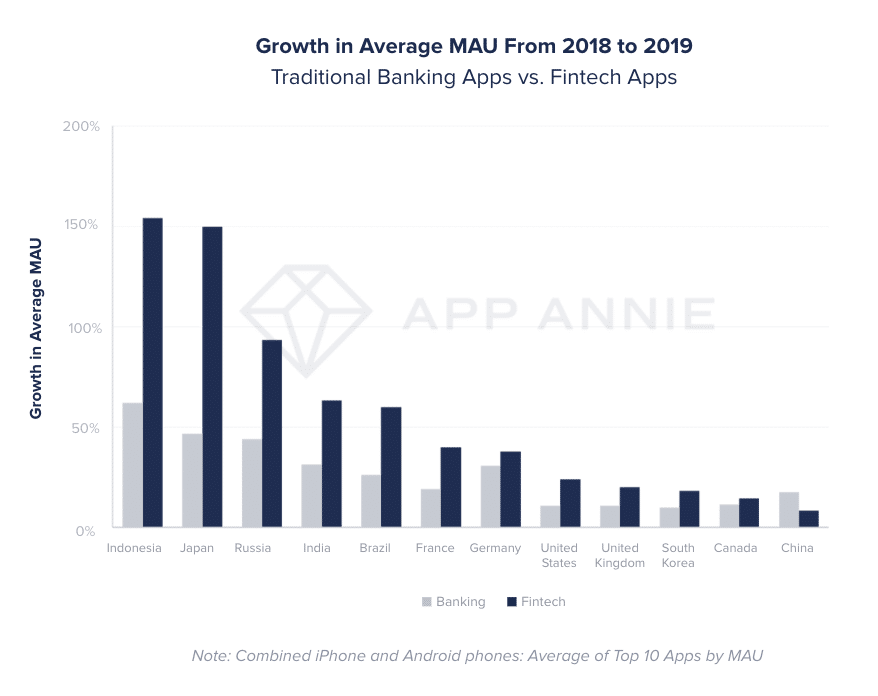
Mobile To Drive Digital Transformation in 2020
In 2020, mobile will continue to grow at a rapid rate. We would not be surprised to see the average time spent on smartphones per day eclipse the four-hour mark. Mobile ads will continue to follow the money, as we predict brands to spend $240B on mobile marketing in 2020. And with Postmates, Airbnb, Robinhood, and DoorDash as potential candidates for IPOs in the year ahead, it could be another banner year for mobile-first companies on the public markets.
As you chart out the year ahead, make a resolution to re-think your mobile experiences — as mobile is only going to continue this sustained growth in 2020 and beyond.
Ready to transform your mobile strategy? Download App Annie’s industry-leading State of Mobile 2020 Report today.






















